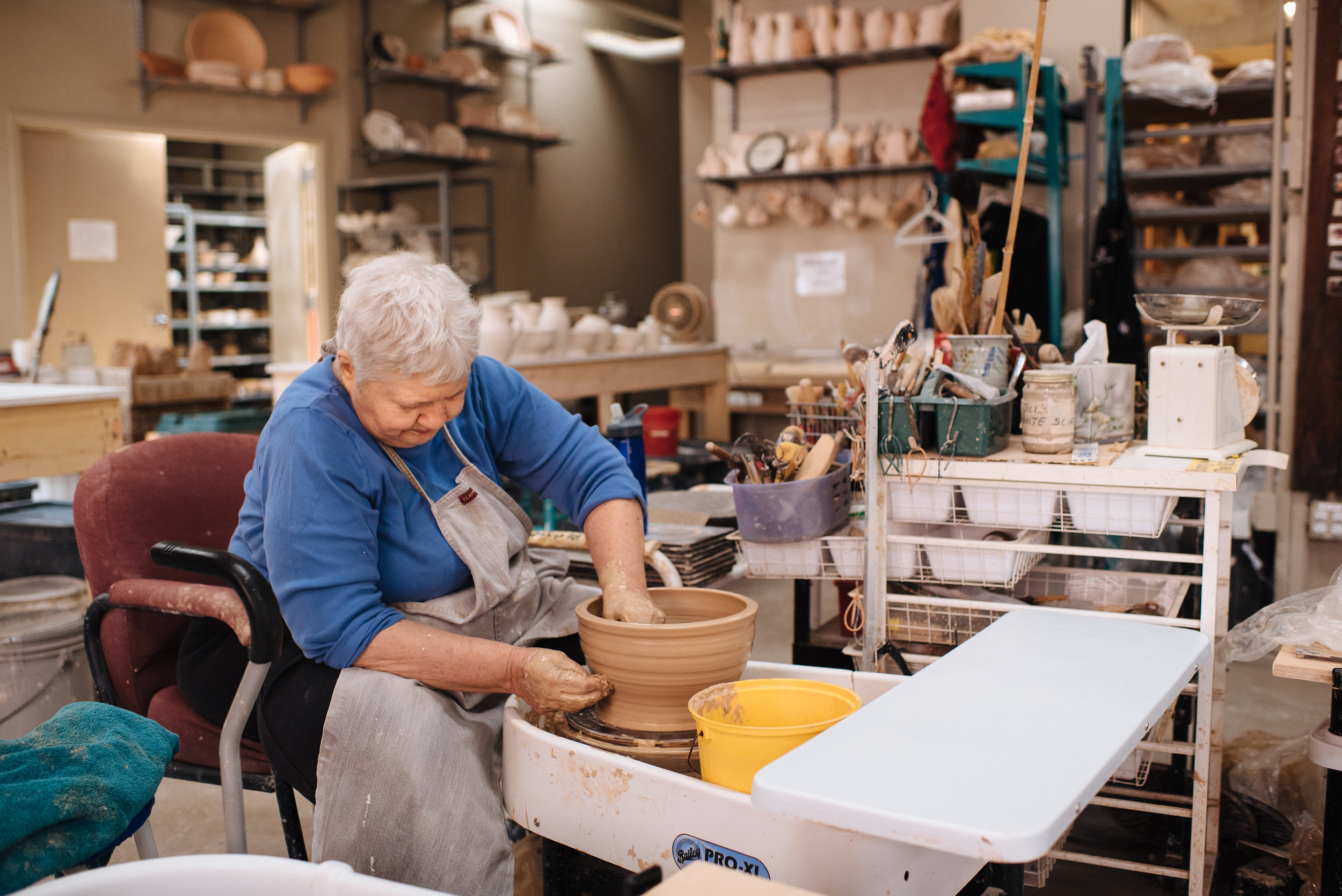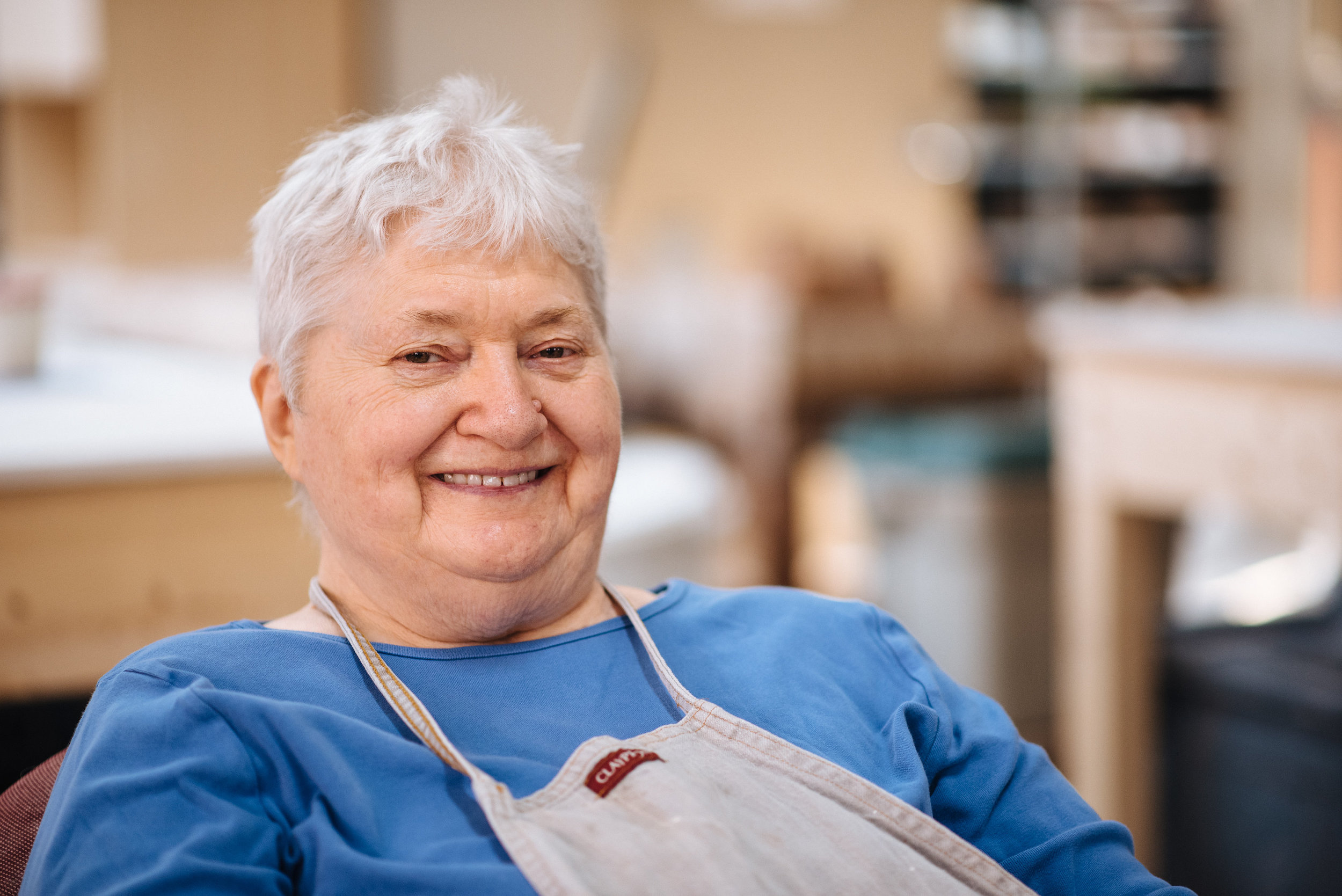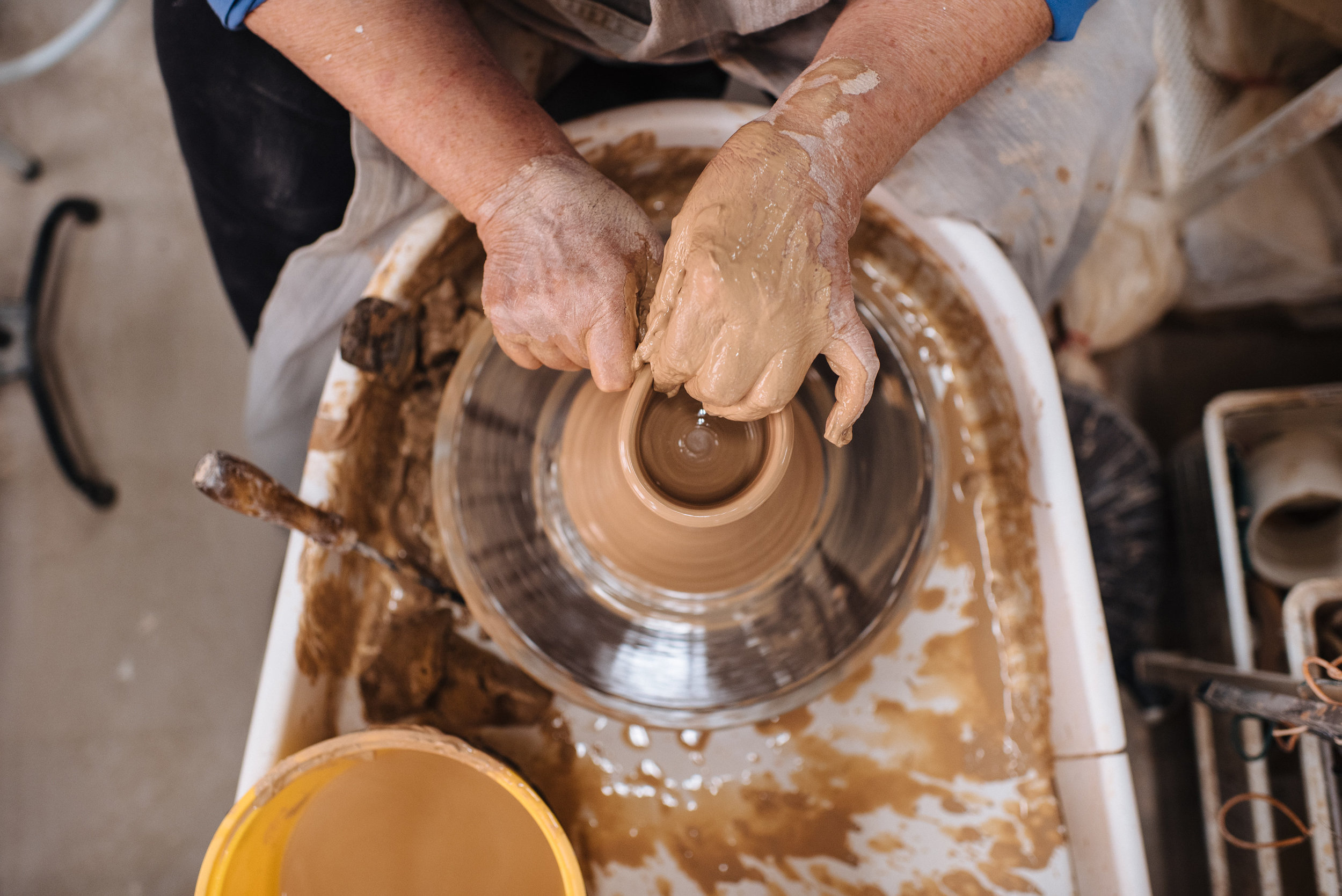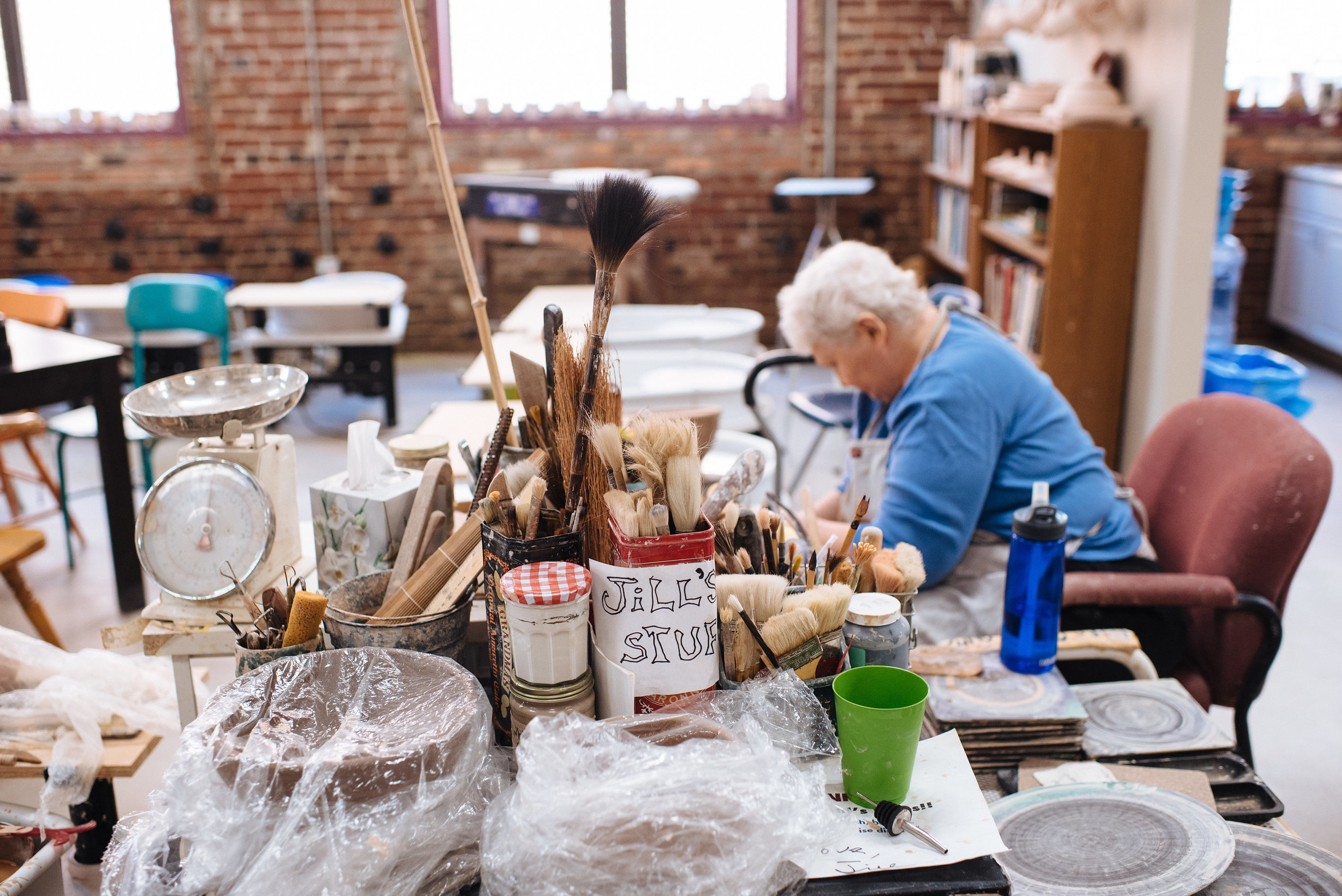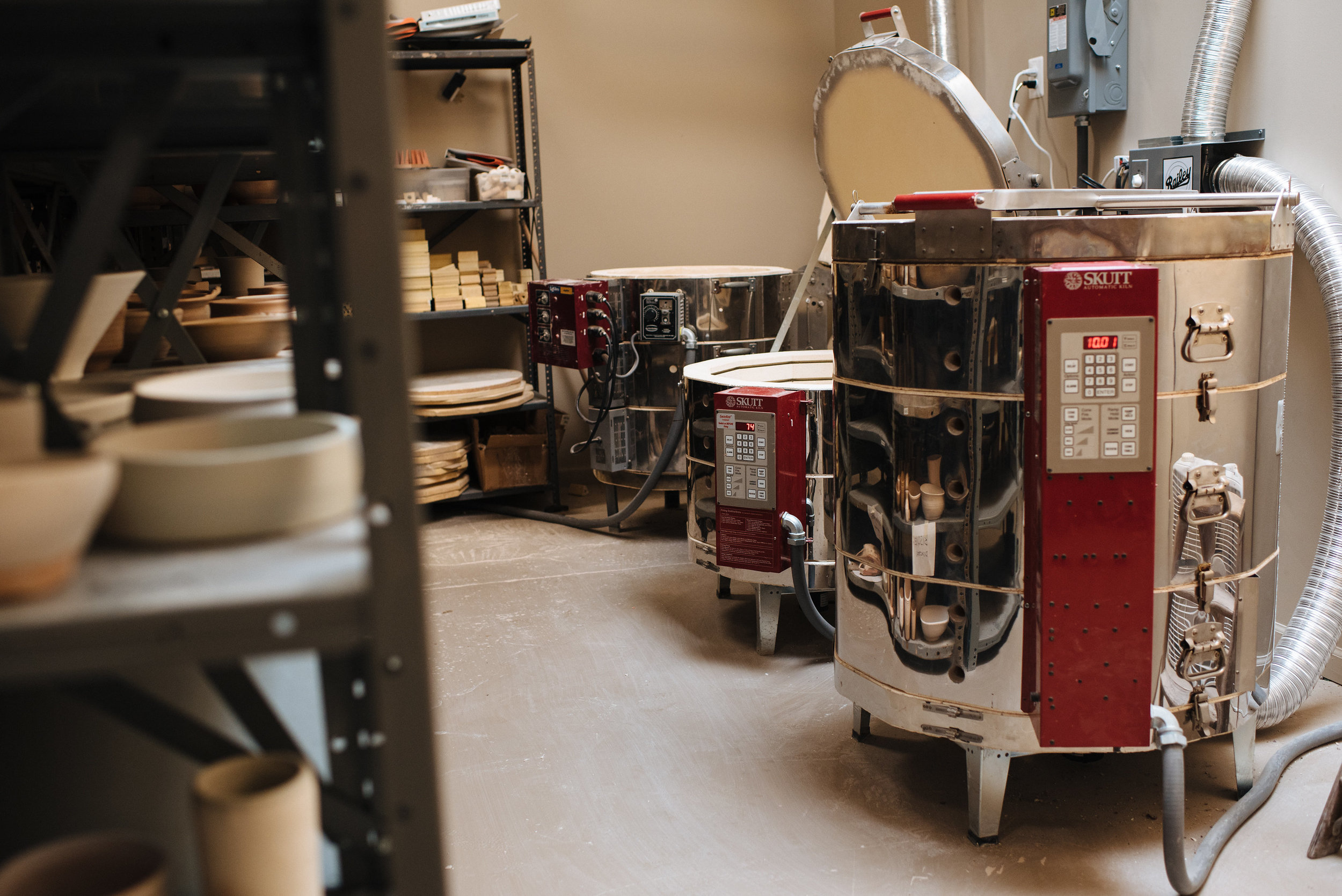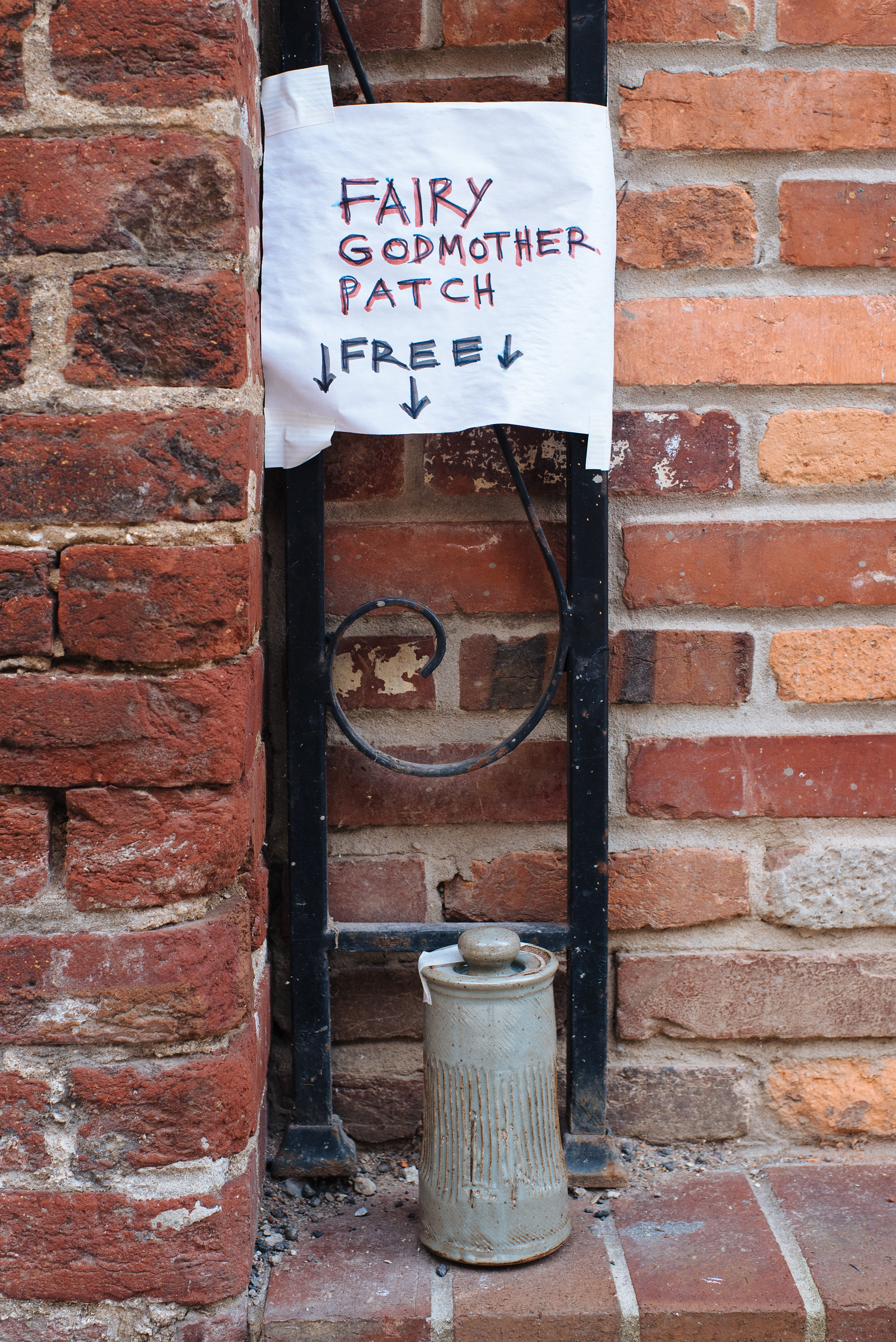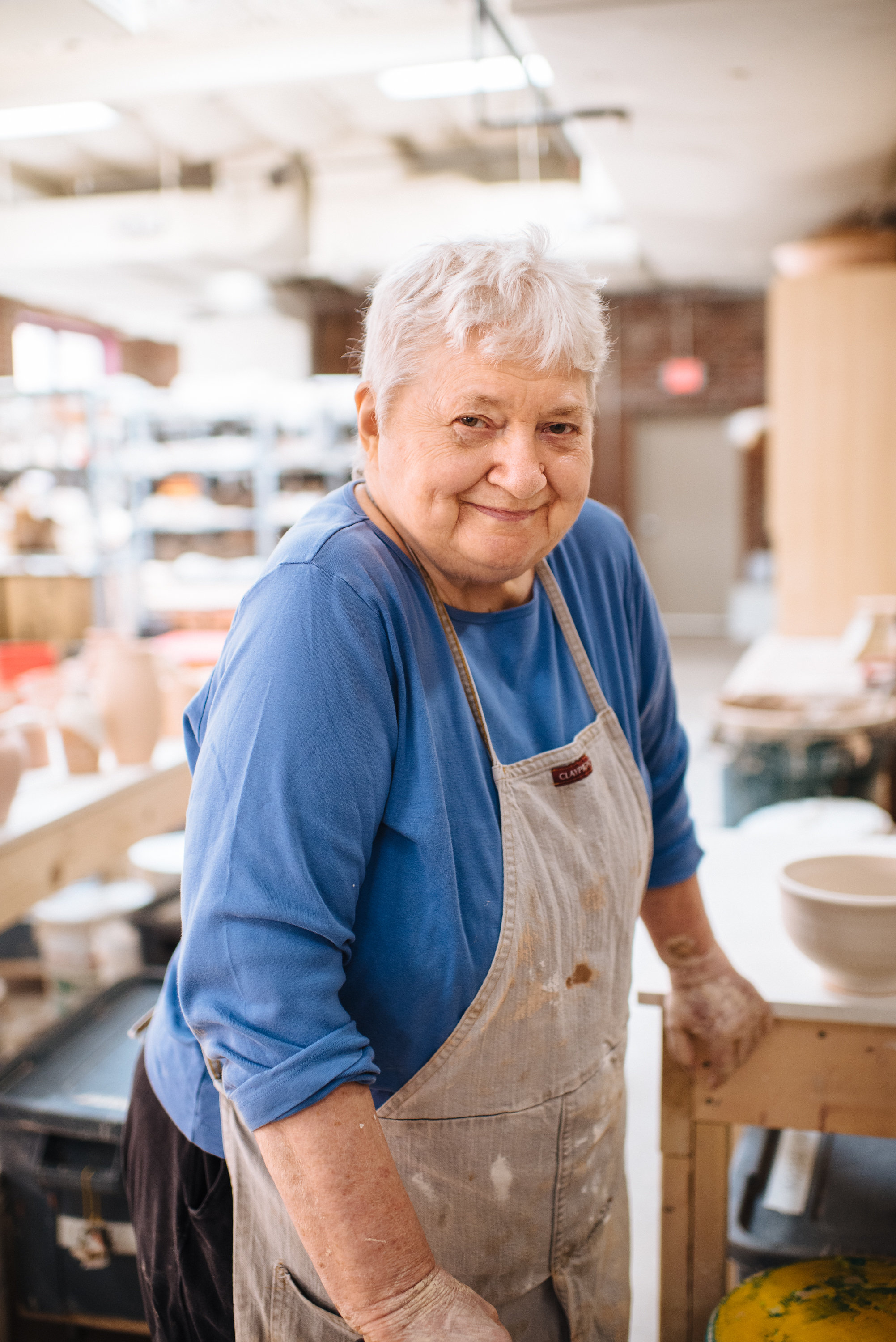‘I Love Making Something Out of Mud’
Draped in a mink coat, a woman dropped her 5-year-old son off at Jill Hinckley’s pottery studio. When she came back to collect him, he was covered in mud.
‘He had jumped into one of these big barrels of clay,’ Jill says. ‘This did not go over well with the fur coat. That’s the last we saw of Michael.’
What his mother hated, Jill loves.
‘Getting all glurpy, and the control and discipline of making something out of this mud—it’s wonderful. Just wonderful.’
Jill’s been getting ‘glurpy’ for over 50 years. In the 1960s, she owned an art gallery in New York that sold contemporary drawings.
‘It was kind of ridiculous, because at the time abstract expressionism was all the rage, so drawing wasn’t a part of the deal.’
Moving to Georgetown for a change of scenery, Jill planned to open a similar gallery, but soon learned that most of the artists she wanted were already showing in other galleries. She began opening her eyes to other art forms—primarily photography and pottery.
After taking in a few potters and photographers at her new studio, Jill discovered Teruo Hara, a celebrated Japanese potter who taught at the Corcoran. She became acquainted with many of his students, who were talented and understood the Asian pottery techniques that Jill would later love herself.
With an art gallery on the second floor of a Wisconsin Avenue building and a pottery studio in the back, Teruo’s students began to teach. Jill became their apprentice.
‘I just loved it. I was teaching art at a school in Virginia for dyslexic students and kids with all sorts of problems, and a lot of my extra time I’d spend in the pottery studio watching these guys teach and throw pots and thinking this is great.’
A year later, in 1968, Jill began teaching pottery for children and beginners. She says she wasn’t very good, but the studio needed help. Eventually, Jill was teaching everyone.
While Jill’s burgeoning career remained steadfast, her studio space saw many changes, moving out of Georgetown and into Foggy Bottom. When that building was torn down to make way for a high-rise, Jill again relocated—this time above an Ethiopian restaurant in Adams Morgan.
‘We were there for several years until one of the big buckets of clay exploded and went down into the restaurant and got this Ethiopian guy dressed in a white suit all muddy, and the landlord made it utterly clear this was not going to happen again. So we had to move.’
Think about what it’s like to pack and unpack one kitchen’s worth of plates and cups and bowls, and then think about doing the same for an entire pottery studio.
But Jill and her team settled into a new Adams Morgan location in Kalorama—a very funky, ‘iffy’ neighborhood at the time—and stayed for over two decades.
When the landlord needed the space to expand another business, out—yet again—came the boxes and bubble wrap. Hinckley Pottery looked, and looked, and looked, finally finding a space in Georgetown’s Blues Alley. No electricity, no heat, no water, no gas, no nothing.
‘That should have given us a clue that it might be a while before we could re-open.’
Over a year, in fact. From an abundance of sprinkler system regulations to delayed electrical work, Jill says the process was overwhelming.
‘We weren’t getting any money in and losing students to other places. It was heartbreaking. Finally we opened and here we are, but we have a long way to go to get back to where we used to be.’
Hinckley Pottery's students—once numbering over 175 before this year’s setback—are anywhere from 9 to 83 years old. A few have been with Jill since the late 60s, often become ‘lifers’ after their first 10-week class.
‘I like being in DC because you get all kinds of people. I get a lot of lawyers, who are always really good students. They pay attention to what you’re saying so carefully. It’s lovely. They need something like pottery to get away from all the small print. They need pottery more than us.’
To the outsider, throwing pottery often looks easy. It is easy for Jill. She’s been practicing for 50 years, after all.
‘It just comes naturally to me, but it’s taken all these years of doing it to feel utterly comfortable with what I do,’ says Jill, who can throw a pot in five minutes. ‘I’m very interested in the kinds of things that make it difficult. One of our current students is having a lot of difficulty, and the main thing the teachers and I came up with was a sense of, if she’s having a lot of fun, if it’s a wonderful thing for her to be doing, and she likes the atmosphere and people around her, stick with her and show her one or two things every time she’s here, and she’ll get better. Sometimes the people who are slow hang in there and love it regardless.’
For those whose pottery expertise begins and ends at the scene from Ghost, Hinckley offers a 2.5-hour ‘try it’ class behind the wheel. Jill says the same type of person who enjoys yoga and other forms of relaxation is often drawn to art form—a way of taking your mind off of everything else and concentrating on the act of throwing a pot. Most of Jill’s students start throwing by the end of their first lesson, eventually learning how to trim, glaze and fire their pots.
For Jill’s part, all of the pots on sale at Hinckley are hers. She says she’s always making something new, selling it, and trying to get new restaurants and shops interested in taking on her pots.
‘Throwing and teaching are the two things I love best. Some potters make glazes and build kilns and do all kinds of techy things, but I’m not good at that or interested in it.’
At 80, Jill’s interests are as steady as her hands behind the wheel. When she’s not at the studio, she’s tending to her Takoma Park garden.
‘Everybody in my family who got to be my age, well before they turned 80 they had tremendous arthritis in their hands. I have a little stiffness but not much, and I really attribute that to working with my hands all the time. I throw a million pots a year.’
Jill leans back in her cushioned chair, those same hands covered in mud, sheepish grin spreading across her face.
‘You’re never going to get anything except a pot from me.’
